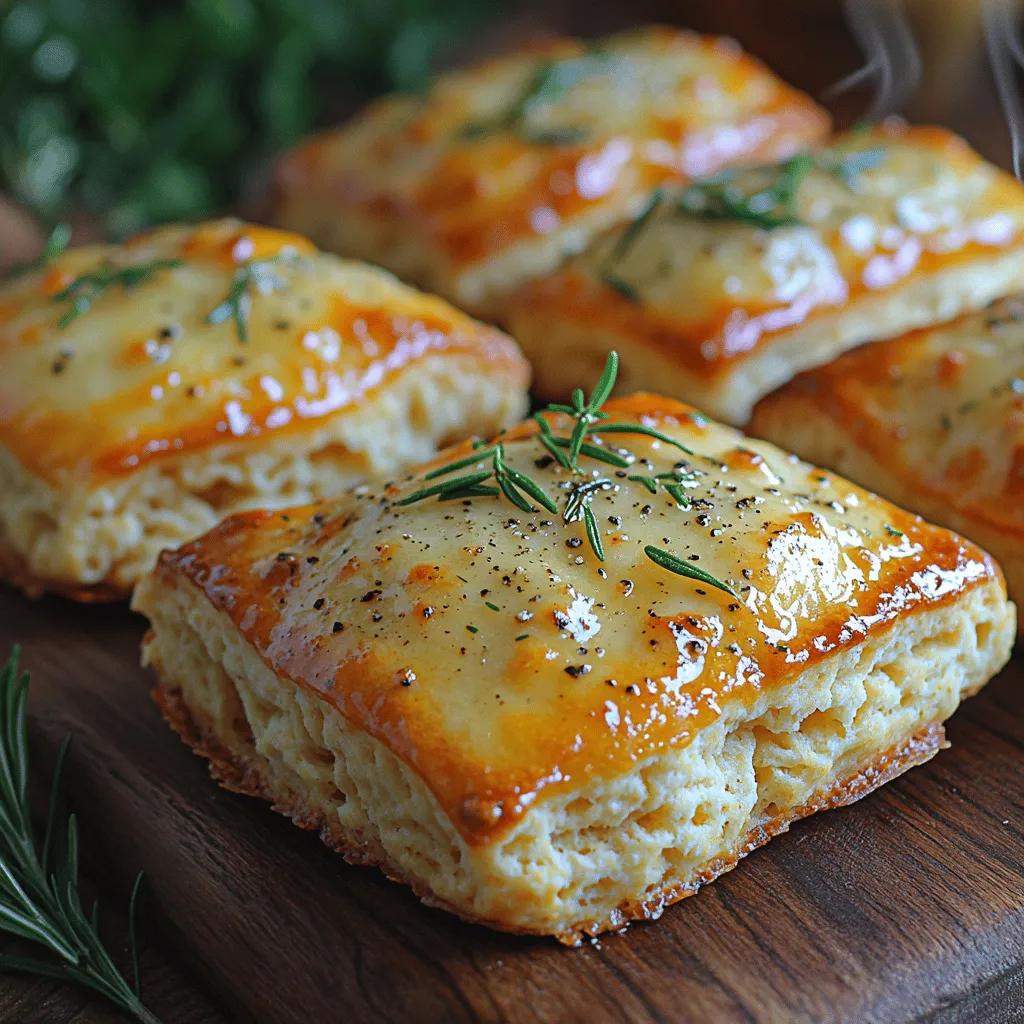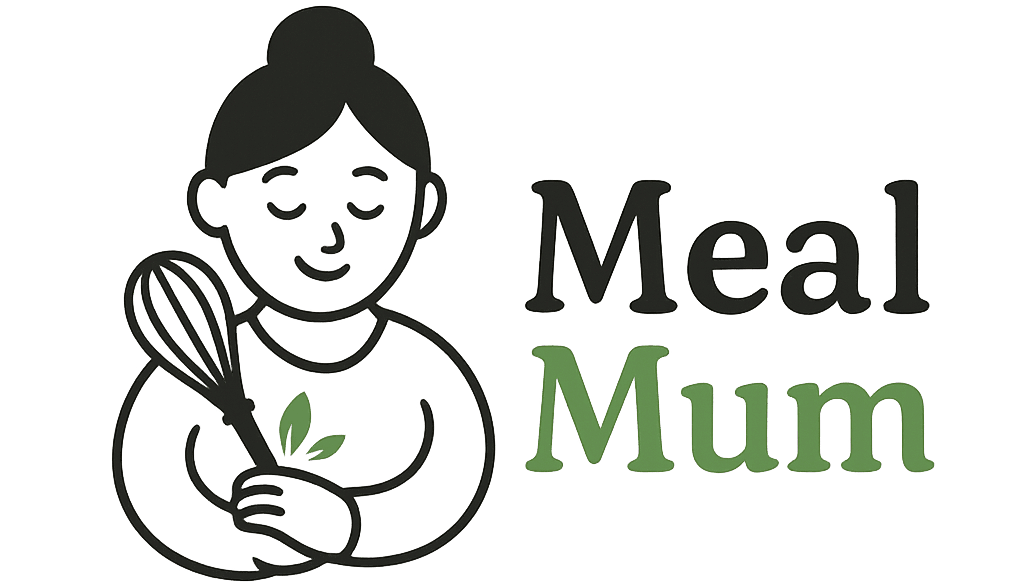Savory Herb Cheddar Scones: A Culinary Delight
Scones, often celebrated for their versatility, have carved out a beloved place in both sweet and savory culinary realms. Originating from the British Isles, these delectable baked goods have evolved over time, transitioning from afternoon tea staples to breakfast favorites and brunch showstoppers. Among the myriad of flavor combinations, Savory Herb Cheddar Scones stand out for their delightful melding of sharp cheddar cheese and aromatic herbs. The result is a mouthwatering treat that is both comforting and sophisticated, making it a perfect addition to any meal or occasion.
The unique flavor profile of these scones—where the richness of cheddar meets the freshness of herbs—offers a delightful twist on traditional scones. The savory notes make them an excellent choice for breakfast, a snack, or even as an accompaniment to soups and salads. Moreover, the ease of preparing these scones at home means that anyone can enjoy this culinary delight fresh from the oven without needing to be a seasoned baker.
Understanding Scones
To appreciate the Savory Herb Cheddar Scones fully, it’s essential to understand the scone itself. Scones are a type of quick bread, which means they rely on chemical leavening agents like baking powder and baking soda rather than yeast. This characteristic allows for a faster preparation time, making scones an ideal choice for both novice and experienced bakers.
Historically, scones were a staple of Scottish cuisine, often enjoyed with jam and clotted cream during tea time. Over time, the recipe spread across the UK and beyond, leading to various adaptations, including sweet versions studded with dried fruits or topped with cream. Savory scones, however, have gained considerable popularity in modern baking, reflecting a growing trend towards incorporating bold flavors and ingredients, making them suitable for a broader range of palates.
Ingredient Breakdown
When it comes to making Savory Herb Cheddar Scones, the quality and selection of ingredients play a crucial role in achieving the perfect texture and flavor. Here’s a closer look at the key components that make this recipe shine:
– All-Purpose Flour: This staple ingredient forms the base of the scone dough. It provides structure while allowing for a tender crumb. For those with dietary restrictions, alternatives such as whole wheat flour or gluten-free blends can be used, though this may alter the texture slightly.
– Baking Powder and Baking Soda: These leavening agents are vital for achieving the scones’ characteristic rise. Baking powder works to create a light and fluffy texture, while baking soda, when combined with acidic ingredients like buttermilk, helps enhance the leavening process.
– Fresh Herbs: The inclusion of fresh herbs like rosemary and thyme not only elevates the flavor profile of these scones but also adds a touch of elegance. Rosemary imparts a fragrant, pine-like aroma, while thyme offers a subtle earthiness that complements the sharpness of the cheddar cheese. Beyond flavor, these herbs carry health benefits, including anti-inflammatory properties and antioxidants.
– Sharp Cheddar Cheese: The star of this recipe, sharp cheddar brings a robust and tangy flavor that contrasts beautifully with the herbs. Different types of cheddar, such as aged or white cheddar, can be used to tailor the flavor to your preference, ensuring that each bite is packed with cheesy goodness.
– Butter: Cold butter is essential for creating a flaky texture in scones. When incorporated into the flour, the butter creates pockets of steam during baking, resulting in a tender and airy scone. For those seeking a dairy-free option, plant-based butters can be substituted, although the flavor and texture may vary.
– Buttermilk: This ingredient is not only crucial for adding moisture but also introduces acidity, which helps to tenderize the dough and enhance the overall flavor. If buttermilk is unavailable, a simple substitute can be made by mixing regular milk with a splash of vinegar or lemon juice.
– Optional Honey: While entirely optional, a touch of honey can add a subtle sweetness that balances the savory elements of the scone. It’s a great way to enhance the depth of flavor without overwhelming the dish.
Step-by-Step Instructions
Now that we’ve got a good grasp on the ingredients, it’s time to dive into the preparation process of these Savory Herb Cheddar Scones. Here’s a detailed breakdown of the initial steps:
1. Preheat Your Oven: Begin by preheating your oven to 425°F (220°C). Preheating is crucial, as it ensures that the scones will bake evenly and rise properly from the moment they hit the hot oven.
2. Prepare Your Baking Sheet: Line a baking sheet with parchment paper. This not only prevents the scones from sticking but also promotes an even browning on the bottom, giving your scones a perfect golden finish.
3. Mix the Dry Ingredients: In a large mixing bowl, combine the all-purpose flour, baking powder, baking soda, and a pinch of salt. Whisk them together to ensure that the leavening agents are evenly distributed throughout the flour. This step is vital for achieving consistent rising in your scones.
4. Incorporate the Butter: Next, take your cold butter and cut it into small cubes. Add the cubes to the flour mixture. Using a pastry cutter or your fingertips, work the butter into the flour until the mixture resembles coarse crumbs. Be cautious not to overwork the dough, as this can lead to tough scones rather than the desired light and flaky texture.
5. Add the Cheese and Herbs: Once the butter is well incorporated, fold in the shredded sharp cheddar cheese along with the fresh herbs. This is where the magic happens—the aroma of herbs combined with the cheese will begin to awaken your senses.
6. Combine with Buttermilk: Create a well in the center of the dry mixture and pour in the buttermilk. Using a fork or spatula, gently mix until the dough just comes together. It’s important to avoid over-mixing here; the dough should be slightly shaggy and sticky, indicating the right level of moisture without being overly developed.
With these steps, you’re well on your way to creating a batch of Savory Herb Cheddar Scones that will delight your family and friends. Stay tuned for the next part, where we’ll cover the final steps in shaping, baking, and serving these delightful treats.

Mixing Dry Ingredients
To make the perfect Savory Herb Cheddar Scones, the first step involves mixing the dry ingredients. The key to achieving an exceptional flavor and texture lies in the even distribution of all components. Begin by sifting the flour, baking powder, and salt into a large mixing bowl. Sifting not only removes lumps but also aerates the mixture, which is crucial for the scone’s texture.
Once sifted, add the finely chopped fresh herbs and cheese to the flour mixture. To ensure that the herbs and cheese are evenly distributed throughout the dough, gently toss them with the flour using your fingers or a whisk. This technique helps prevent clumping and guarantees that every bite of your scone is packed with flavor.
Incorporating Butter
The next step is to incorporate cold butter into your dry ingredients. Cold butter is essential as it creates those coveted flaky layers in the scones. Cut the butter into small cubes and add it to the flour mixture. Using a pastry cutter, two forks, or your fingertips, work the butter into the flour until the mixture resembles coarse crumbs. The goal here is to leave some pea-sized pieces of butter intact, which will melt during baking, creating steam and ultimately resulting in a flaky texture.
Understanding the science behind this process is vital. The cold butter, when heated, creates pockets of steam, contributing to the scones’ rise and flakiness. Ensure you work quickly to prevent the butter from warming, maintaining the desired texture.
Combining Wet and Dry Ingredients
Once the butter is incorporated, it’s time to combine the wet and dry ingredients. In a separate bowl, whisk together the milk and egg until well blended. Create a well in the center of the dry ingredients, then pour in the wet mixture. Using a spatula or wooden spoon, gently fold the wet ingredients into the dry until just combined.
Be cautious not to overmix at this stage, as doing so can lead to tough scones. The dough should be slightly shaggy and sticky but hold together when pressed. If it appears too dry, add a splash more milk, a tablespoon at a time, until it reaches the right consistency.
Shaping the Dough
After combining the ingredients, it’s time to shape the dough. Turn it out onto a lightly floured surface and gently knead it a few times, just enough to bring it together. For layered scones, pat the dough into a rectangle about 1-inch thick. This creates layers that will enhance the texture.
To create those flaky layers, fold the dough over onto itself several times—about three folds should suffice. This technique helps to build structure and flakiness, as each fold incorporates air and creates distinct layers.
Cutting the Scones
Now comes the fun part: cutting the scones. You can choose various shapes depending on your aesthetic preference and the occasion. Traditional round scones are made using a biscuit cutter, but you can also opt for squares or triangles to save time and reduce waste.
When cutting the scones, avoid twisting the cutter, as this can seal the edges and inhibit rising. Instead, press straight down and lift the cutter away. Place the cut scones on a baking sheet lined with parchment paper, ensuring they are close but not touching.
Baking Process
The final step is baking your scones to perfection. Preheat your oven to 400°F (200°C). Bake the scones for about 15-20 minutes or until they are golden brown on top. To check for doneness, gently tap the top of a scone; it should feel firm and spring back slightly.
For an extra golden finish, brush the tops with a little milk or an egg wash before baking. This simple step ensures a beautiful, shiny crust that is visually appealing. Keep an eye on the oven, as every oven behaves differently, and you want to ensure your scones do not overbake.
Serving Suggestions
Savory Herb Cheddar Scones are incredibly versatile and can be enjoyed in various ways. Here are some delightful serving suggestions:
– With Butter or Preserves: Serve warm scones with a pat of butter melting into them or alongside a selection of preserves. The rich, savory flavor of the cheese complements sweet jams perfectly.
– Accompanying Soups or Salads: These scones pair wonderfully with soups or salads, making them an excellent addition to a light lunch or dinner. Try serving them with a creamy tomato basil soup or a fresh garden salad.
– For Brunch or Tea Time: Elevate your brunch or afternoon tea by serving these scones alongside a selection of cheeses, cured meats, and fresh fruits. Their savory nature makes them a delightful addition to a charcuterie board.
Storage and Reheating
To keep your Savory Herb Cheddar Scones fresh for longer, follow these storage tips:
– Storing Leftovers: Allow the scones to cool completely before storing them in an airtight container at room temperature. They can last for up to three days this way. For extended freshness, consider freezing them.
– Keeping Scones Fresh: If you plan to store them for longer, wrap each scone tightly in plastic wrap and place them in a freezer-safe bag or container. They can be frozen for up to three months.
– Reheating: To enjoy your scones at their best, reheat them in an oven preheated to 350°F (175°C) for about 10-15 minutes. This method helps regain their original texture and flavor. Alternatively, you can microwave a scone for about 20-30 seconds, but be mindful not to overheat, as this can make them tough.
Nutritional Information
Understanding the nutritional benefits of your ingredients enhances your appreciation of this delightful recipe. Each Savory Herb Cheddar Scone contains:
– Cheddar Cheese: A good source of protein and calcium, cheddar cheese also provides essential vitamins and minerals.
– Fresh Herbs: Herbs not only add flavor but also offer various health benefits, including antioxidants and anti-inflammatory properties.
– Flour and Butter: While these ingredients contribute to the scone’s rich flavor, moderation is key. The combination provides energy and satiety.
Generally, each scone (based on a standard recipe) contains approximately 200-250 calories, depending on the size and specific ingredients used. Keep portion sizes in mind if you’re monitoring caloric intake.
Conclusion
Savory Herb Cheddar Scones are a delightful addition to any meal, offering a perfect balance of flavor and texture. Their buttery, flaky layers paired with the aromatic herbs and sharp cheddar create a treat that is both comforting and sophisticated.
Encouraging readers to experiment with variations, consider adding different cheeses or herbs based on seasonal availability or personal preferences. The joy of baking lies in the ability to customize recipes to suit your taste.
Finally, remember that baking is not just about creating delicious food but also about sharing moments with others. Whether you’re enjoying these scones at breakfast, brunch, or tea time, the warmth and goodness of homemade scones are sure to bring joy to your kitchen and beyond. Happy baking!


